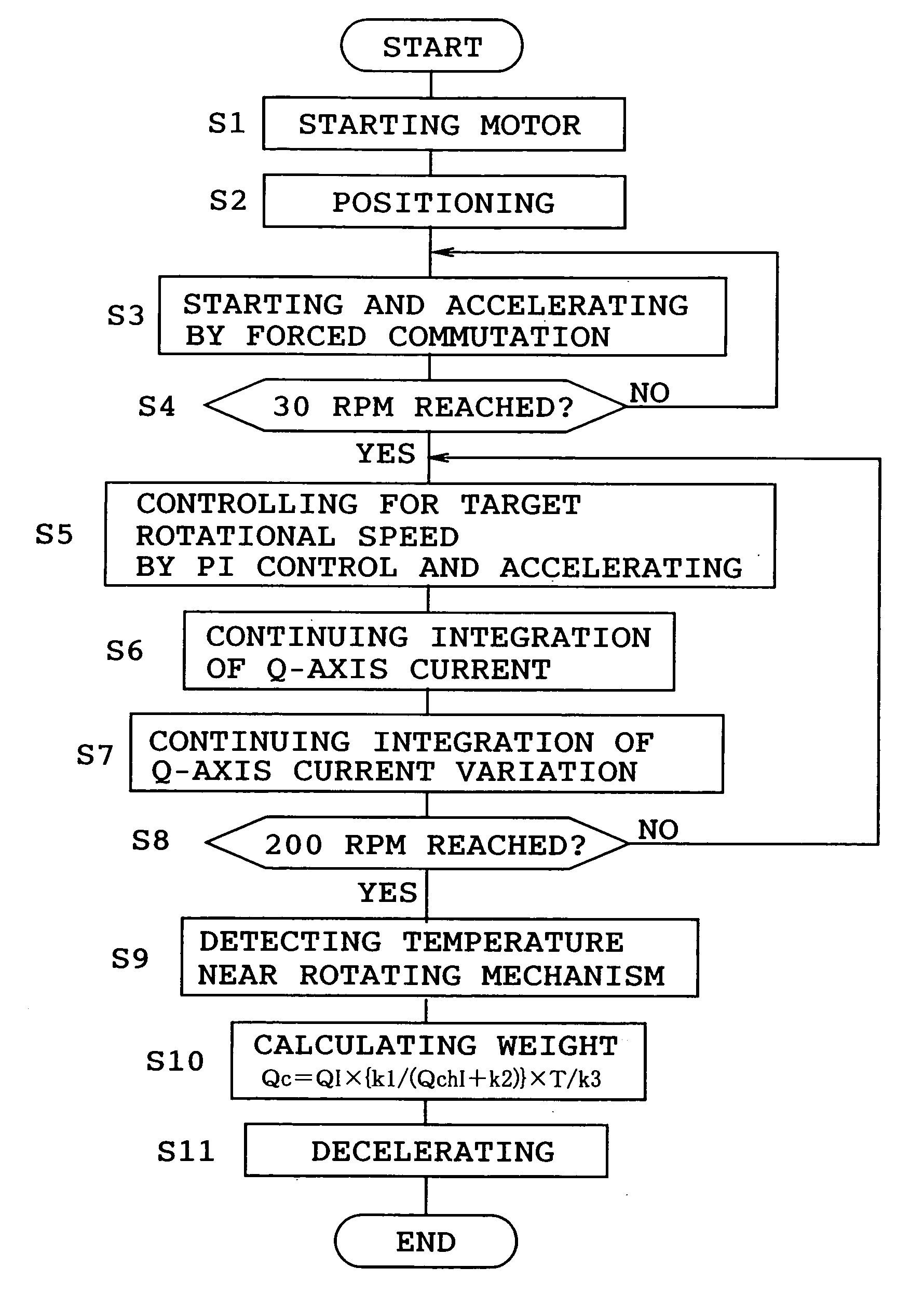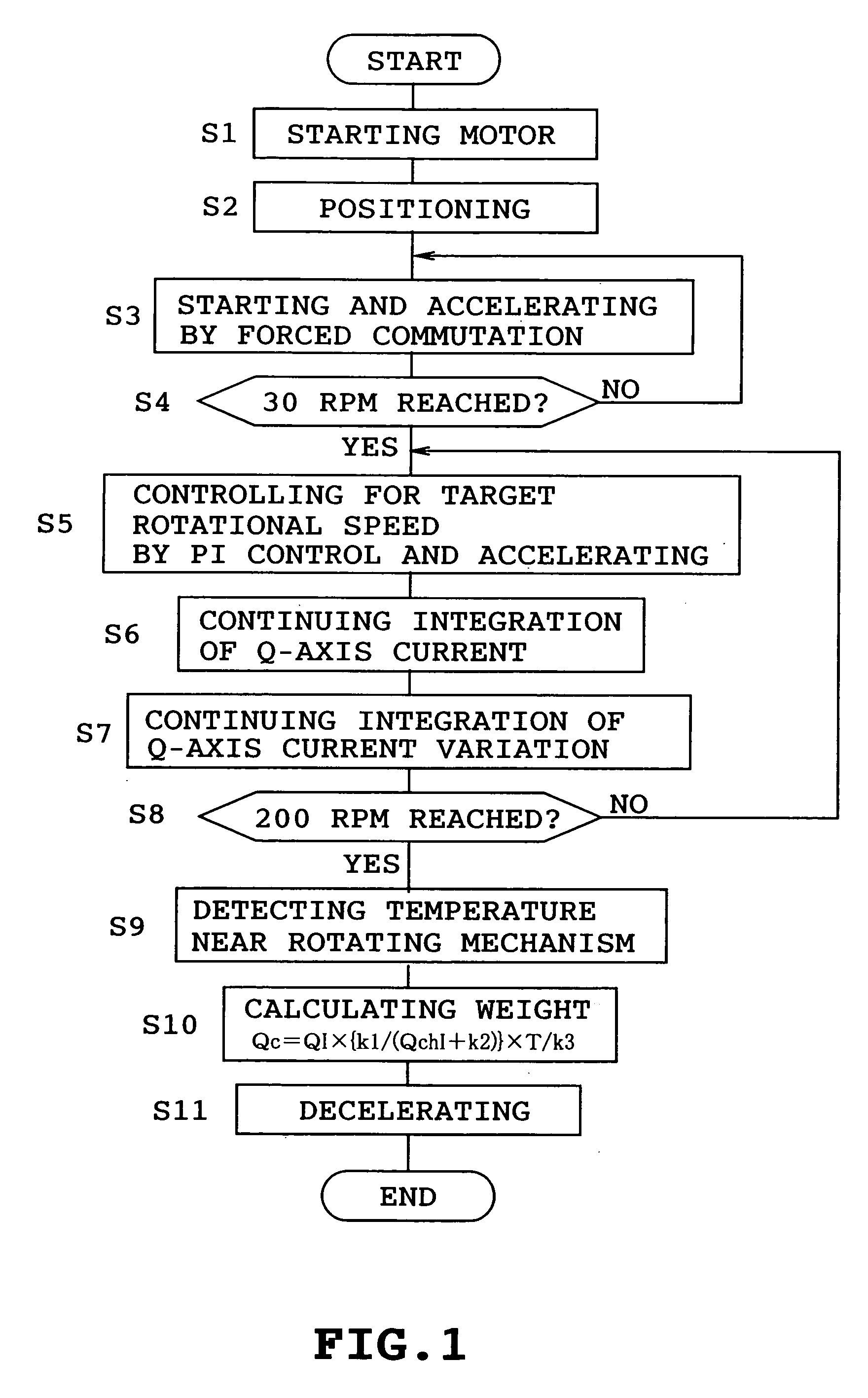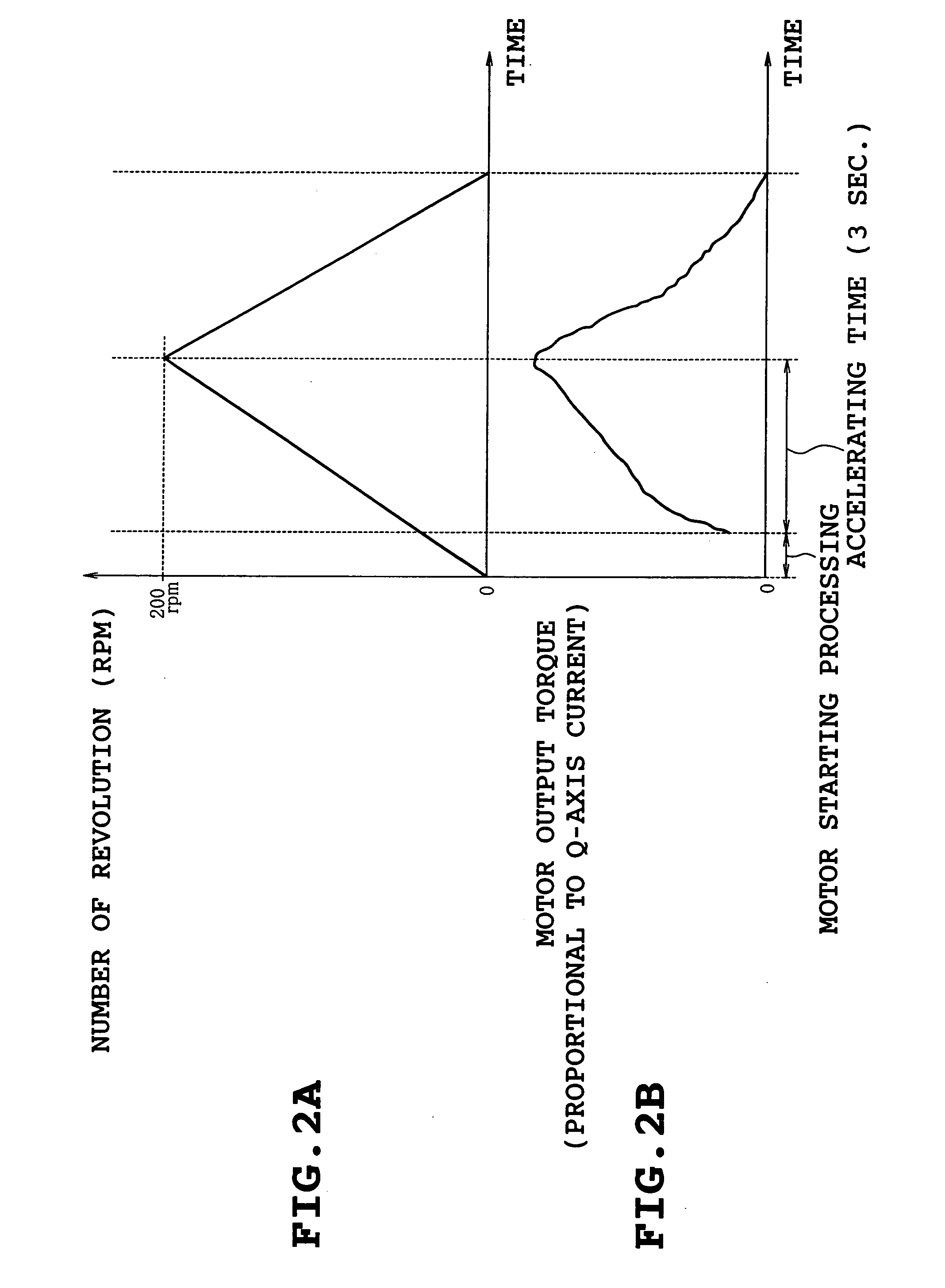Washing machine
a washing machine and motor technology, applied in the field of washing machines, can solve the problems of inability to accurately detect, increase the variation of detection results, and above-described conventional techniques, and achieve the effects of reducing detection time, reducing the amount of laundry, and reducing the motor output torqu
- Summary
- Abstract
- Description
- Claims
- Application Information
AI Technical Summary
Benefits of technology
Problems solved by technology
Method used
Image
Examples
Embodiment Construction
[0020] One embodiment of the present invention will be described with reference to the accompanying drawings. Referring first to FIG. 8, a drum type washing machine in accordance with the invention is shown. The washing machine comprises a cabinet 1 formed by assembling steel plates into the shape of a rectangular box. The cabinet 1 includes a front formed with a circular opening 2. A circular door 3 is mounted on the front of the cabinet 1 so as to be pivoted so that the opening 2 is closed and opened. A door lock mechanism 4 (see FIG. 9) is provided on the cabinet 1 and includes an electromagnetic solenoid (not shown) serving as a drive source. When the electromagnetic solenoid is excited during closure of the door 3, a plunger of the solenoid is moved to a lock position thereby to hold the door in a closed state.
[0021] A generally circular cylindrical water-receiving tub 5 is provided in the cabinet 1. The water-receiving tub 5 has a closed rear and is connected to rods 7 of a p...
PUM
 Login to View More
Login to View More Abstract
Description
Claims
Application Information
 Login to View More
Login to View More - R&D
- Intellectual Property
- Life Sciences
- Materials
- Tech Scout
- Unparalleled Data Quality
- Higher Quality Content
- 60% Fewer Hallucinations
Browse by: Latest US Patents, China's latest patents, Technical Efficacy Thesaurus, Application Domain, Technology Topic, Popular Technical Reports.
© 2025 PatSnap. All rights reserved.Legal|Privacy policy|Modern Slavery Act Transparency Statement|Sitemap|About US| Contact US: help@patsnap.com



